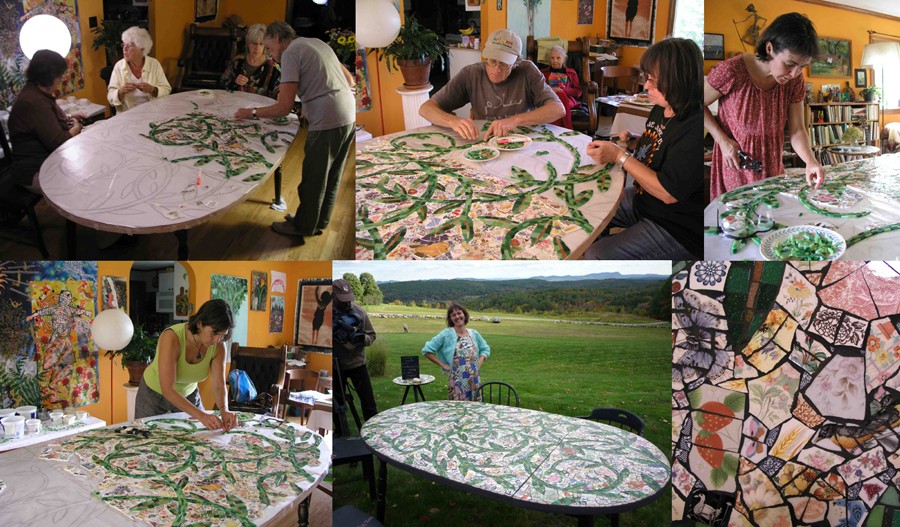Theme: Sustainability in the Pioneer Valley—what is it? what does it look like? sound like? etc…what are the causes of unsustainable behavior? What are the benefits of sustainable living? The scope of this contest is deliberately broad–we want your ideas…
Description and Background: Artists and inventors throughout the Pioneer Valley (Franklin, Hampshire and Hampden counties), Massachusetts, are invited to submit their ideas and concepts for a project that will result in a representation of sustainability. Ideas can be described visually (through sketches, models, sculpture, video etc.) and verbally. This first stage of the contest involves only concepts; not finished artwork or productions.
Purpose: The goal of this contest is to stimulate thought and action on sustainability in the Pioneer Valley. The idea of sustainability dates back more than 35 years. It was a key theme of the United Nations Conference on the Human Environment in Stockholm in 1972. The concept was coined explicitly to suggest that it was possible to achieve economic growth and industrialization without environmental damage. In the ensuing decades, the concept of sustainability was progressively developed through the World Conservation Strategy (1980), the Brundtland Report (1987), and the United Nations Conference on Environment and Development in Rio (1992).
Sustainability is both a goal and a concept. As a goal, sustainability is an idea of a world where people care for and nurture the environment and one another as they carry out their day-to-day activities. As a concept, sustainability calls for probing about limits on natural resources, capacities of ecosystems, and interactions among social, economic, political and environmental systems. The central theme underlying this concept is working toward a sustainable quality of life, now and in the future.
Perhaps the most widely accepted definition of sustainability comes from the Brundtland Commission. The Commission was convened by the United Nations in 1983 to address growing concern about the accelerating deterioration of the human environment and natural resources and the consequences of that deterioration for economic and social development. The Commission defined “sustainability” as development that “meets the needs of the present without compromising the ability of future generations to meet their own needs.” Enough for all forever.
The concept of sustainability presents us with exciting challenges. It inspires all of us to work creatively toward moderating and changing our practices and behavior. It feeds new ideas and passions about technological, economic, and social growth that are ecologically viable.
Embracing all of this, what does sustainability in the Pioneer Valley look like, sound like, feel like? How can it be represented? Is it best articulated through a device, or through dance, music, film, sculpture, or two-dimensional design? We invite you to show and tell us.
Funding: $1,000 for winning concept submission and significant exposure and recognition for ALL finalists. Contest winner must agree to execute his/her winning idea and produce the final work with a $5,000 budget by September 30, 2008.
Criteria: The Pioneer Valley Sustainability Network is looking for project ideas that demonstrate the following:
- effective communication about the concept of sustainability;
- creative use of materials (recycled, locally based, or sustainable in other ways);
- how the final work can be produced within the $5,000 award budget (include a budget) plus any other funding you have to realize your idea;
- how the final work will reach a large public audience here in the Pioneer Valley (include a plan);
- a spirit and intent that is positive;
- an artistic imagination;
- inspiration to thought and action on the part of the audience who experiences your art/invention.
- You must also be available to present your idea to the Judges on June 25, 2008 6:30-9 pm at the Academy of Music Theatre in Northampton
Judges for the contest will use the above criteria to evaluate all submissions.
Judges: (click here to see bios)
ART: Hilary Price, Josh Simpson, Gina Beavers,
Media/outreach: Chris (Monty) Belmonte, Rus Peotter, Kristen Beam
Sustainability: Daniel Ross, David Starr, John Majercek,
Eligibility: In the spirit of sustainability, this contest will be locally based in the Pioneer Valley. Artists and inventors of all ages, backgrounds, training are encouraged to submit ideas—you must all live, work, or go to school in one of the cities or towns located in Hampden, Hampshire, or Franklin County.
|
Call for Submissions–IDEAS first winner will receive up to $5,000 to create her/his idea Sustainability—Enough for All Forever Art/Invention Contest Sponsored by The Pioneer Valley Sustainability Network
|
The contest is over. Thank you for your interest–




